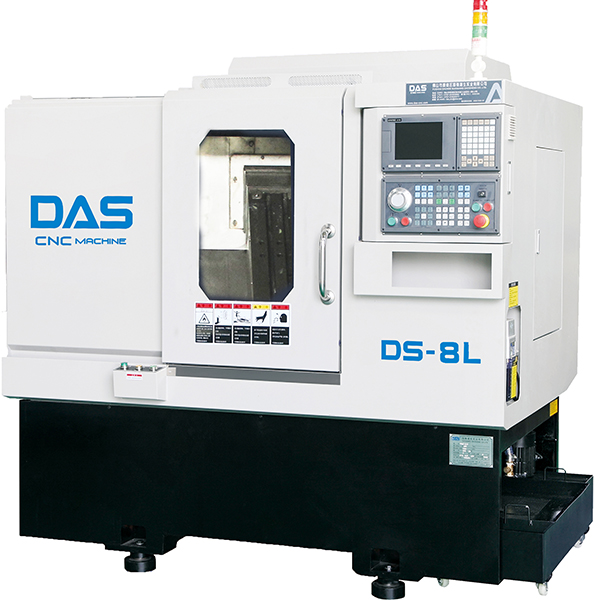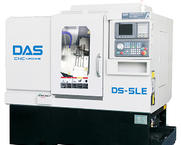Modern CNC milling machines generally use programmable controllers to replace most machine tool electrical appliances in the electrical cabinets of ordinary machine tools, so as to achieve logical control of the spindle, feed, tool change, lubrication, cooling, hydraulic and pneumatic transmission systems. Last week we talked about the fault diagnosis object of CNC milling machine, which helps the operator to correctly determine the fault in actual operation and eliminate it in time. Today we further classify the faults and introduce to you that common faults can be divided into several categories.
(1) Classification according to the parts of the CNC milling machine
• Machine tool failure
Mechanical transmission failure and excessive friction of guide rails caused by mechanical installation, commissioning, and improper operation and use, are usually manifested as large transmission noise, poor machining accuracy, and large running resistance. The above problems can be caused by loose flexible couplings of the transmission chain, lack of oil in gears, screws and bearings, improper adjustment of the guide rail plug, poor lubrication of the guide rails, and improper setting of the CNC system parameters.
In particular, it should be paid attention to that the oiling points marked on various parts of the machine tool need to be regularly and quantitatively lubricated, which is the guarantee of the normal operation of each transmission chain of the machine tool.

• Electrical failure
Electrical fault is divided into weak current fault and strong current fault. The weak current part mainly refers to electronic circuits such as CNC devices, PLCs, CRT displays, servo units, and I / O devices. This part is divided into hardware failure and software failure. Strong electric fault refers to the failure of components such as relays, contactors, switches, fuses, power transformers, electromagnets, travel switches, and the circuits composed of them. This part of the fault is very common and must be taken seriously.
(2) Classification according to the nature of the failure of the CNC milling machine
• Systemic failure
Systematic failure usually refers to the failure of the CNC milling machine in operation as long as certain conditions are met or a certain setting is exceeded. Lubrication, cooling, or hydraulic systems cause the cursor to drop due to pipeline leakage. When a certain limit is reached, a liquid level alarm will inevitably occur and the CNC milling machine will stop. Therefore, the correct use and careful maintenance of CNC milling machines is a practical guarantee to prevent or avoid such systemic failures.
• Random failure
Random failures are usually one or two failures that occur accidentally when the index controlled milling machine works under the same conditions, and some are called “soft failures”. Because this kind of fault happens occasionally once or twice under the same conditions, the cause analysis and fault diagnosis of random faults are much more difficult than other faults.
Generally speaking, the occurrence of such failures is often related to many factors such as installation quality, component arrangement, parameter setting, component quality, operating errors and improper maintenance, and the impact of the working environment. Working environment temperature is too high or too low, humidity is too high, power fluctuations and mechanical vibrations, harmful dust and gas pollution can cause such accidental failures.
(3) Classification according to the presence or absence of alarm when a CNC milling machine fails
• There is a fault displayed by the alarm. This type of fault can be divided into two types: hardware alarm display and software alarm display.
The hardware alarm display indicates that the warning lights (usually composed of LED luminous tubes or small indicator lights) on each unit are indicated. Once a fault occurs in the CNC system, the location and nature of the fault can be roughly analyzed and judged with the help of warning lights on the corresponding parts, which undoubtedly brings great convenience to fault analysis and diagnosis. Therefore, maintenance personnel should carefully check whether the status of these warning lights is normal during routine maintenance and troubleshooting.
Software alarm display usually refers to the alarm number and alarm information displayed on the display screen (CRT). Because the CNC system has a self-diagnostic function, once it detects a fault, it processes it according to the level of the fault, and displays the fault information in the form of an alarm number on the CRT.
• No alarm display fault. When this kind of fault occurs, there is no hardware or software alarm display, so it is difficult to analyze and diagnose. For example, after the CNC milling machine is powered on, when running in manual or automatic mode, the X axis crawls without any alarm display. As another example, the machine tool suddenly stops during automatic operation, and there is no alarm display on the CRT. For no-alarm display faults, it is usually necessary to analyze specific situations, and analyze and judge according to the state of change before and after the fault occurs.
For example, when the X axis is crawling during operation, first determine whether the CNC part is faulty or the servo part is faulty. The specific method is: In the manual pulse feed mode, the manual pulse generator can be rotated uniformly, and the change rates of the Y-axis, Z-axis and X-axis feed numbers on the CRT can be observed and compared respectively.
(4) Classification by reason of failure of CNC milling machine
• CNC milling machine itself malfunctions
This type of failure is caused by the CNC milling machine itself, and has nothing to do with the external environmental conditions. Most of the faults that occur in CNC milling machines are such faults, but it should be distinguished that some faults are not caused by the machine tool itself, but are caused by external reasons.
• External failure of CNC milling machine
Mainly there are too low power supply voltage, excessive voltage fluctuations, incorrect voltage phase sequence or unbalanced three-phase voltages; ambient temperature is too high; harmful gases, moisture, and dust invade the numerical control system; external vibration and interference; Malfunctions, such as improper operation, excessive feed caused by manual feed too fast, automatic cutting feed over CNC milling machine quickly caused overload alarm.
According to relevant statistics, for the first time using a CNC milling machine or an unskilled worker to operate the CNC milling machine, in the first year of use, external failures caused by improper operation account for more than 1/3.
In addition to the above common fault classifications, it can also be divided into destructive faults and non-destructive faults according to the presence or absence of destructive faults; according to the location of the fault, it is divided into CNC device faults, feed servo system faults, spindle system faults, and Rack, tool magazine, workbench failure, etc. A proper understanding of fault classification helps to quickly resolve the fault.




